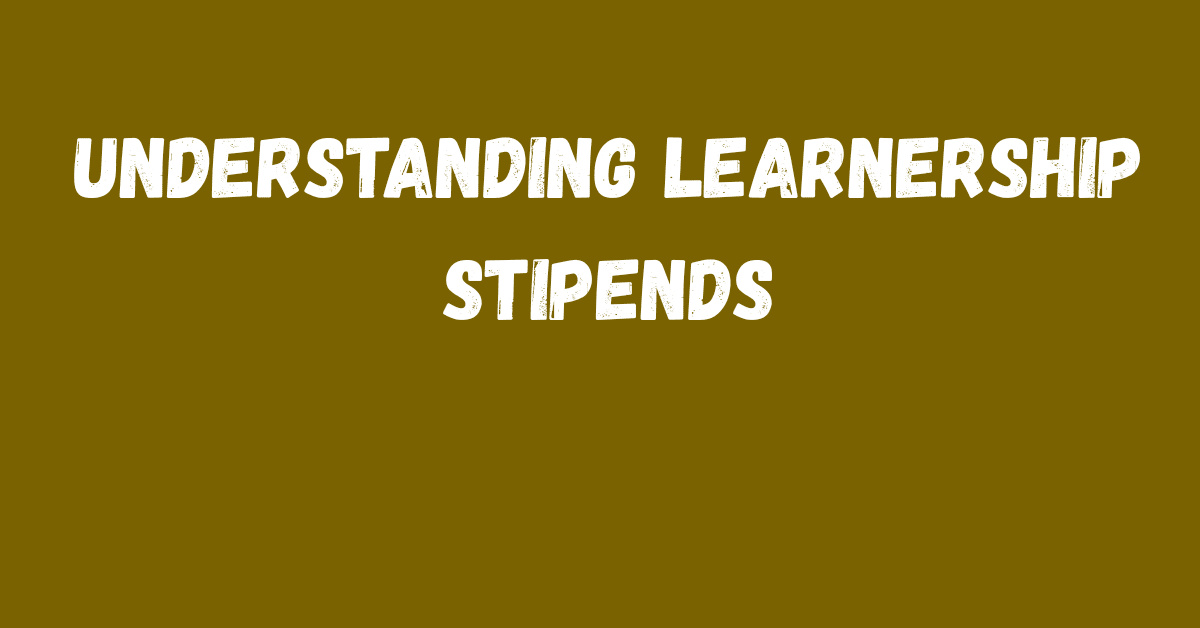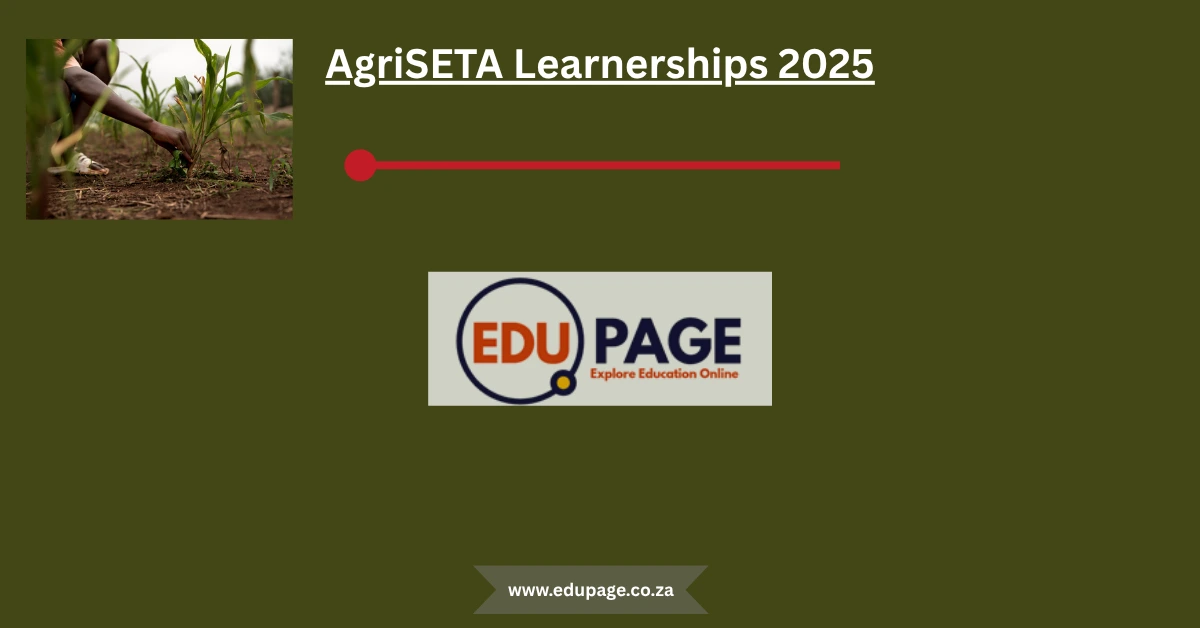Understanding Learnership Stipends in South Africa: A Transparent Guide for 2025

A Story of Opportunity: What a Learnership Means Beyond Training
For thousands of South Africans, a learnership is more than just an education programme—it’s a stepping stone into the working world. It is a structured way of combining practical workplace training with theoretical education, giving learners both experience and a qualification.
But with opportunities also comes an important question that many young people ask before applying: “How much is the learnership allowance?”
This guide takes you through a clear, reliable breakdown of Understanding learnership stipends in South Africa—what to expect, why the amounts vary, and how these allowances support learners on their journey to employment.
What Exactly Is a Learnership Stipend?
A learnership stipend is not a salary. Instead, it is an allowance provided to learners during the duration of the programme.
The stipend is meant to cover basic living expenses, such as transport, food, and study materials. Employers are not required to match industry salaries for learners because the goal is skills development rather than full-time employment.
This makes it different from a job offer, but still a crucial support system for learners who would otherwise struggle to afford training.
The General Range of Learnership Stipends in South Africa
According to Edupstairs and SETA guidelines, most learnership stipends fall between R2,500 and R8,000 per month.
- Lower range stipends (R2,500 – R3,500): Often associated with entry-level SETA programmes in fields like IT or office administration.
- Mid-range stipends (R4,000 – R5,000): Common in business-related SETA programmes such as those from Services SETA.
- Upper range stipends (R6,000 – R8,000): Generally linked to technical or specialized industries like finance, engineering, or telecommunications.
This variation exists because industries differ in training costs, demand for skills, and workplace requirements.
Example: MICT SETA (Media, Information, and Communication Technologies)
The MICT SETA often offers stipends of around R2,500 per month.
These programmes usually target young, unemployed individuals who are beginning careers in IT, digital communication, and media. While the stipend is on the lower end, it provides essential exposure to a fast-growing sector where long-term earning potential is much higher.
Example: Services SETA and Other Sectors
The Services SETA—responsible for sectors like wholesale, retail, and business administration—typically offers stipends ranging from R4,500 to R4,800 per month.
These stipends are higher because learners often need to interact with clients, work in office environments, and handle complex administrative duties that require professional presentation.
Minimum Allowance Guidelines: What the Law Says
Learnership allowances are guided by Sectoral Determination No. 5: Learnerships, which sets the minimum weekly stipend amounts.
These minimums depend on the credits earned within the learnership framework. For example:
- R204.47 per week for entry-level programmes with fewer credits.
- Up to R920.09 per week for more advanced qualifications.
This means that even if a SETA or employer sets its own stipend, it cannot fall below the government’s legal minimum.
Factors That Influence Learnership Stipends
Not every learner receives the same stipend, even within the same industry. Here’s why amounts differ:
- Industry and Sector Needs
High-demand fields like finance, IT, or healthcare may offer higher stipends compared to retail or hospitality. - Level of Qualification
Learnerships tied to advanced qualifications (such as NQF Level 5 or higher) generally come with larger stipends. - Employment Status
- Unemployed learners receive stipends to support their participation.
- Employed learners may not receive stipends, as they already earn salaries.
- Company Budget
While SETAs fund stipends, some employers may choose to top up allowances to attract stronger candidates.
Why Stipends Are Not Salaries: Setting Real Expectations
One common misunderstanding is that learnerships are “jobs with pay.” They are not.
Instead, they are learning opportunities with financial support. The stipend ensures learners can commit to training without being forced to choose between survival and education.
This distinction is vital for setting realistic expectations. For example:
- A learner earning R3,500 is not expected to cover the same expenses as a permanent employee.
- The main value is in the qualification and experience gained, which will lead to future earning potential.
The Human Side: What a Stipend Means for Learners
For many South Africans, even a modest stipend is life-changing.
Imagine a 22-year-old who has been unemployed for two years. A learnership offering R4,000 per month may not sound like much compared to a corporate salary, but for them, it means:
- Covering taxi fare to training.
- Buying basic groceries.
- Contributing to household expenses.
- Saving a small amount for personal growth.
Beyond money, it restores dignity and hope—because being in a structured programme means they are building towards a career.
Success Story: From Stipend to Salary
Many graduates of learnerships share stories of how their modest stipends were the beginning of their success.
Take Nomsa, who started on a R2,800 stipend through an IT learnership. At first, she struggled to balance costs. But within 18 months, she had earned her qualification and gained full-time employment with a starting salary of R12,000 per month.
Her stipend wasn’t the end goal—it was a stepping stone.
Benefits of Learnerships Beyond the Allowance
While the stipend is important, learners should also focus on the long-term benefits:
- Nationally Recognized Qualification
Learnerships provide NQF-level qualifications that are valid across industries. - Workplace Exposure
Learners gain real-world skills and references, which make CVs stronger. - Employment Opportunities
Many companies absorb learners into permanent roles after successful completion. - Career Development
Even if not retained, learners are better positioned for future opportunities.
How Employers Benefit Too
It’s not just learners who win. Companies also gain through learnerships:
- B-BBEE compliance: Companies earn B-BBEE scorecard points by hosting learnerships.
- Tax incentives: Employers receive tax rebates for supporting learnerships.
- Skilled workforce: Businesses train staff to meet their exact operational needs.
This creates a win-win relationship where both learners and employers benefit.
Stipends as an Investment in the Future
Think of stipends not as “small salaries,” but as investments in potential.
Every rand spent on supporting learners builds South Africa’s workforce. When learners complete their programmes, they don’t just uplift themselves—they contribute to the economy and inspire others in their communities.
Key Takeaways: Learnership Stipends in 2025
- Range: R2,500 – R8,000 per month.
- Lowest example: MICT SETA at around R2,500.
- Higher range: Services SETA at R4,500 – R4,800.
- Legal minimums: Weekly allowance between R204.47 and R920.09 depending on credits.
- Purpose: To support learners, not to act as full salaries.
Conclusion: Your Learnership Journey Is Worth More Than the Allowance
When asking “How much is the learnership allowance?”, the answer is clear: it depends on the programme, the SETA, and the sector.
But beyond the numbers, a learnership allowance represents access, dignity, and opportunity. It allows learners to gain skills that will stay with them for a lifetime.
The stipend may seem modest, but the real reward is the qualification, experience, and career growth that follows.
If you are considering a learnership, don’t focus only on the allowance. Instead, see it as the fuel that powers your journey towards a brighter, more stable future.



